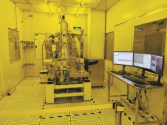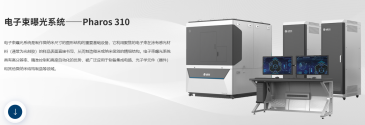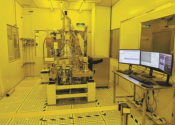the country's first 100KV domestically produced commercial electron beam lithography machine "Xizhi" has entered the application test. Its accuracy is comparable to that of mainstream international equipment, marking that quantum chip research and development now has a "Chinese carving knife."

At the testing site, the team at Zhejiang University's Yuhang Quantum Research Institute was bustling with activity. A machine resembling a large steel cabinet was undergoing application testing, its electronic display flashing real-time parameters. "This isn't just any machine; it's a 'nano-magic pen' capable of carving an entire city map from a strand of hair!" the team leader told reporters. Developed by a provincial key laboratory, the institute's new-generation 100kV electron beam lithography system, called "Xizhi," has officially launched on the market.
"Xizhi" is named after the calligrapher Wang Xizhi, "but our 'brush' is an electron beam, which writes circuits on the chip." The relevant person in charge of the R&D team introduced that this equipment specializes in the core links of quantum chips and new semiconductor research and development. It uses high-energy electron beams to "handwrite" circuits on silicon with an accuracy of 0.6nm and a line width of 8nm. The design can be flexibly modified without a mask, just like painting precisely on the chip with a nano-scale brush. It is particularly suitable for repeated debugging in the early stages of chip research and development.
Previously, this type of equipment was subject to international export controls, preventing top domestic research institutions such as the University of Science and Technology of China and the Zhijiang Laboratory from purchasing it. The launch of Xizhi is expected to break this bottleneck. Reporters learned that its pricing is lower than the international average, and that it has already initiated discussions with several companies and research institutions.
The success of "Xizhi" is not an isolated case; it is driven by the powerful integration of scientific and technological innovation and industrial innovation. In July of this year, a provincial-level pilot project for the integrated reform of education, science, and talent was launched at the Zhejiang University Alumni Enterprise Headquarters Economic Park in Yuhang District. Zhejiang University and the park have jointly established a highway for the commercialization of research results: enterprises in the park provide a "list of technical requirements", and Zhejiang University professors and graduate students form teams to "solve the problems", providing support from laboratory samples to mass-produced products.
In the West Chengxi Science and Technology Innovation Corridor, such integration is becoming the norm. An academician workstation has been established in the Chengtou Future Star office building, seamlessly connecting with business needs. The West Chengxi Science and Technology Innovation Corridor has consistently launched solicitations for outstanding proof-of-concept projects, paving the way for successful commercialization. Going forward, the West Chengxi Science and Technology Innovation Corridor will continue to promote the integration of new technologies, accelerate breakthroughs in hard science, and promote the efficient transformation of scientific and technological achievements into practical productivity.




